Can You DIY External Wall Insulation?
External wall insulation is an excellent option to improve your home’s energy efficiency and reduce utility bills. But is it possible to do it yourself? In this blog post, we’ll explore the feasibility of a DIY external wall insulation project, what you’ll need, the potential pitfalls, and how to avoid them.
What is EWI, and what are the benefits?
It is always useful to recap what EWI is and the benefits it brings to your home. External wall insulation involves fixing a layer of insulation material to the outside of your home, which is then covered with render or cladding. The primary goal is to reduce heat loss, which can lead to significant savings on heating bills and improve the thermal comfort of your home.
What do you need for DIY External Wall Insulation?
Several key components and factors must be considered to execute a DIY external wall insulation project successfully. First, selecting the appropriate insulation material for your home, such as expanded polystyrene (EPS), mineral wool, or phenolic foam, is essential. EPS is a great cost-effective option and is incredibly lightweight, making it easier to handle on-site. You will require 90mm of EPS to achieve the required U-value to match building regulations.
| Thermal conductivity | Thickness required for 0.3W/m2K | |
| Mineral Wool | 0.036W/(m2K) | 110mm |
| EPS | 0.032W/(m2K) | 90mm |
| Kingspan K5 | 0.021W/(m2K) | 60mm |
Mineral Wool is a premium, sustainable option for EWI. As such, it provides ample extra benefits, including acoustic insulation. Moreover, mineral wool is also A1 fire-rated, offering peace of mind to your home. At EWI Store, we stock Kingspan K5, a type of phenolic foam. The insulation boards offer unmatched thermal performance, as only 60mm is required to achieve the required U-value. K5 is our premier space-saving system due to its low thickness and higher compressive strength.
-
Rockwool External Wall Dual Density Slab
Rated 5.00 out of 5From £26.24 Incl. VATFrom £21.87 Excl. VAT -
EPS Insulation (1 board = 0.72m²)
Rated 5.00 out of 5From £2.60 Incl. VATFrom £2.17 Excl. VAT -
Kingspan Kooltherm K5 External Wall Board (0.72m²)
Rated 4.67 out of 5From £11.99 Incl. VATFrom £9.99 Excl. VAT
Additionally, you will need specialised mechanical fixings and adhesives to securely attach the insulation boards to the wall and a protective layer like a weatherproof render or cladding system to safeguard the insulation from the elements and provide an attractive finish. Basic tools for cutting and shaping insulation boards, a trowel or spray gun for adhesive application, and safety gear such as gloves and goggles are also crucial for the project.
Is DIY External Wall Insulation easy?
Although external wall insulation may appear simple, it’s important to recognise that it can be complex and time-consuming. The process demands a solid understanding of building construction, materials, and thermal performance. Proper installation techniques are also necessary to ensure the insulation’s effectiveness and the project’s overall appearance. Depending on your home’s size, the installation may be labour-intensive and require several weeks.

Thorough assessment and planning are necessary to successfully navigate the intricacies of a DIY external wall insulation project. This includes evaluating your home’s walls for existing insulation, wall material, and potentially damp issues. This will inform you of your choice of insulation system and installation method. Precise measurements, material selection, and adherence to local building regulations are essential to project planning.
Proper surface preparation, which may involve cleaning and repairing walls, removing debris or old paint, and addressing dampness or structural issues, is crucial for the insulation system’s effectiveness and longevity. Additionally, accurate cutting and fitting of insulation boards are key to achieving a snug and seamless fit. The secure attachment of insulation boards to the wall using appropriate fixings and adhesives demands technical expertise. This will avoid problems like detachment or thermal bridging.
Weather conditions, such as rain, wind, and temperature fluctuations, can impact the adhesion and curing of materials, necessitating close monitoring and adjustments throughout the installation process. Skilled application of the chosen protective finish, such as render or cladding material, is also essential for the insulation system’s durability and appearance. Maintaining consistency in your project, particularly for larger homes or those with complex architectural features, requires patience, attention to detail, and problem-solving abilities.
Pitfalls and how to avoid them
Several precautions must be taken to prevent potential issues during your DIY external wall insulation project.
Adhere to the manufacturer’s guidelines
Always follow the instructions provided by the insulation material and adhesive manufacturers. These guidelines are designed to ensure optimal performance and longevity of the insulation system. Deviating from the recommended procedures may result in compromised efficiency, moisture problems, or damage to your home’s structure.
Consult with professionals
If you’re unsure about any aspects of the installation process, seek advice from experienced professionals. They can provide valuable guidance and recommendations based on their expertise in the field. Consulting with experts can help you avoid costly mistakes and ensure the success of your project.
Research and select high-quality materials
Investing in premium, compatible materials is crucial for the effectiveness and durability of your insulation system. Research the various insulation materials, fixings, adhesives, and protective finishes available on the market. Then, choose the one that best suits your needs and local climate conditions. For example, high-quality materials will provide better thermal performance. They will also require less maintenance and have a longer lifespan. As a result, your overall savings will be higher.
Familiarise yourself with building regulations
Before starting your project, check with your local authority to determine whether planning permission is required or if there are specific building regulations you must adhere to. Compliance with these regulations is essential to avoid fines, penalties, or even the need to dismantle and redo the work. This may include restrictions on altering your home’s appearance or requirements for energy efficiency, ventilation, and fire safety.
Prioritise safety
Working at heights and handling insulation materials can harm your health and safety. To minimise these risks, ensure you have the appropriate safety gear, such as gloves, goggles, and a sturdy ladder or scaffold. Familiarise yourself with the proper handling and installation techniques of your chosen insulation materials. Also, be cautious when working with power tools or sharp objects.
Assess your comfort level and skillset
Before embarking on a DIY external wall insulation project, evaluate your skills, experience, and comfort level with the tasks involved. Installing insulation can be challenging and requires a certain level of expertise to ensure the desired outcome. If you’re not confident in completing the project successfully or safely, consider hiring a professional insulation contractor. They will have the necessary skills, tools, and knowledge to ensure a high-quality, long-lasting installation.
Our verdict
Any DIY project comes with extra risk. Therefore, if you have the option, we always recommend hiring a professional installer, especially for external wall insulation projects. As EWI can be extra tricky, with thermal bridging and damp constant issues, hiring an approved installer at the outset may prove more cost-effective.
Have you thought about DIY EWI? Let us know below!
Facebook
Twitter
LinkedIn
Your cart
Trade Account Login

We use cookies on our website to give you the most relevant experience by remembering your preferences and repeat visits. By clicking “Accept All”, you consent to the use of ALL the cookies. However, you may visit "Cookie Settings" to provide personalised consent.
Manage consent
Privacy Overview
This website uses cookies to improve your experience while you navigate through the website. Out of these, the cookies that are categorized as necessary are stored on your browser as they are essential for the working of basic functionalities of the website. We also use third-party cookies that help us analyze and understand how you use this website. These cookies will be stored in your browser only with your consent. You also have the option to opt-out of these cookies. But opting out of some of these cookies may affect your browsing experience.
Necessary cookies are absolutely essential for the website to function properly. These cookies ensure basic functionalities and security features of the website, anonymously.
| Cookie | Duration | Description |
|---|---|---|
| __stripe_mid | 1 year | This cookie is set by Stripe payment gateway. This cookie is used to enable payment on the website without storing any patment information on a server. |
| __stripe_sid | 30 minutes | This cookie is set by Stripe payment gateway. This cookie is used to enable payment on the website without storing any patment information on a server. |
| _GRECAPTCHA | 5 months 27 days | This cookie is set by the Google recaptcha service to identify bots to protect the website against malicious spam attacks. |
| apbct_cookies_test | session | CleanTalk sets this cookie to prevent spam on comments and forms and act as a complete anti-spam solution and firewall for the site. |
| apbct_page_hits | session | CleanTalk sets this cookie to prevent spam on comments and forms and act as a complete anti-spam solution and firewall for the site. |
| apbct_prev_referer | session | Functional cookie placed by CleanTalk Spam Protect to store referring IDs and prevent unauthorized spam from being sent from the website. |
| apbct_site_landing_ts | session | CleanTalk sets this cookie to prevent spam on comments and forms and act as a complete anti-spam solution and firewall for the site. |
| apbct_site_referer | 3 days | This cookie is placed by CleanTalk Spam Protect to prevent spam and to store the referrer page address which led the user to the website. |
| apbct_timestamp | session | CleanTalk sets this cookie to prevent spam on comments and forms and act as a complete anti-spam solution and firewall for the site. |
| apbct_urls | 3 days | This cookie is placed by CleanTalk Spam Protect to prevent spam and to store the addresses (urls) visited on the website. |
| AWSALBCORS | 7 days | This cookie is managed by Amazon Web Services and is used for load balancing. |
| cookielawinfo-checkbox-advertisement | 1 year | Set by the GDPR Cookie Consent plugin, this cookie is used to record the user consent for the cookies in the "Advertisement" category . |
| cookielawinfo-checkbox-analytics | 11 months | This cookie is set by GDPR Cookie Consent plugin. The cookie is used to store the user consent for the cookies in the category "Analytics". |
| cookielawinfo-checkbox-functional | 11 months | The cookie is set by GDPR cookie consent to record the user consent for the cookies in the category "Functional". |
| cookielawinfo-checkbox-necessary | 11 months | This cookie is set by GDPR Cookie Consent plugin. The cookies is used to store the user consent for the cookies in the category "Necessary". |
| cookielawinfo-checkbox-others | 11 months | This cookie is set by GDPR Cookie Consent plugin. The cookie is used to store the user consent for the cookies in the category "Other. |
| cookielawinfo-checkbox-performance | 11 months | This cookie is set by GDPR Cookie Consent plugin. The cookie is used to store the user consent for the cookies in the category "Performance". |
| ct_checkjs | session | CleanTalk–Used to prevent spam on our comments and forms and acts as a complete anti-spam solution and firewall for this site. |
| ct_fkp_timestamp | session | CleanTalk sets this cookie to prevent spam on the site's comments/forms, and to act as a complete anti-spam solution and firewall for the site. |
| ct_pointer_data | session | CleanTalk sets this cookie to prevent spam on the site's comments/forms, and to act as a complete anti-spam solution and firewall for the site. |
| ct_ps_timestamp | session | CleanTalk sets this cookie to prevent spam on the site's comments/forms, and to act as a complete anti-spam solution and firewall for the site. |
| ct_sfw_pass_key | 1 month | CleanTalk sets this cookie to prevent spam on comments and forms and act as a complete anti-spam solution and firewall for the site. |
| ct_timezone | session | CleanTalk–Used to prevent spam on our comments and forms and acts as a complete anti-spam solution and firewall for this site. |
| elementor | never | This cookie is used by the website's WordPress theme. It allows the website owner to implement or change the website's content in real-time. |
| viewed_cookie_policy | 11 months | The cookie is set by the GDPR Cookie Consent plugin and is used to store whether or not user has consented to the use of cookies. It does not store any personal data. |
Functional cookies help to perform certain functionalities like sharing the content of the website on social media platforms, collect feedbacks, and other third-party features.
| Cookie | Duration | Description |
|---|---|---|
| __zlcmid | 1 year | This cookie is used by Zendesk live chat and is used to store the live chat ID. |
| bcookie | 2 years | LinkedIn sets this cookie from LinkedIn share buttons and ad tags to recognize browser ID. |
| bscookie | 2 years | LinkedIn sets this cookie to store performed actions on the website. |
| lang | session | LinkedIn sets this cookie to remember a user's language setting. |
| lidc | 1 day | LinkedIn sets the lidc cookie to facilitate data center selection. |
| UserMatchHistory | 1 month | LinkedIn sets this cookie for LinkedIn Ads ID syncing. |
Performance cookies are used to understand and analyze the key performance indexes of the website which helps in delivering a better user experience for the visitors.
| Cookie | Duration | Description |
|---|---|---|
| __utma | 2 years | This cookie is set by Google Analytics and is used to distinguish users and sessions. The cookie is created when the JavaScript library executes and there are no existing __utma cookies. The cookie is updated every time data is sent to Google Analytics. |
| __utmb | 30 minutes | Google Analytics sets this cookie, to determine new sessions/visits. __utmb cookie is created when the JavaScript library executes and there are no existing __utma cookies. It is updated every time data is sent to Google Analytics. |
| __utmc | session | The cookie is set by Google Analytics and is deleted when the user closes the browser. It is used to enable interoperability with urchin.js, which is an older version of Google Analytics and is used in conjunction with the __utmb cookie to determine new sessions/visits. |
| __utmt | 10 minutes | Google Analytics sets this cookie to inhibit request rate. |
| __utmv | 2 years | The __utmv cookie is set on the user's device, to enable Google Analytics to classify the visitor. |
| __utmz | 6 months | Google Analytics sets this cookie to store the traffic source or campaign by which the visitor reached the site. |
| sib_cuid | 6 months | Purechat uses this cookie to send data to purechat.com, to connect visitors to the reservation team and track visitors to stay on portal. |
| SRM_B | 1 year 24 days | Used by Microsoft Advertising as a unique ID for visitors. |
Analytical cookies are used to understand how visitors interact with the website. These cookies help provide information on metrics the number of visitors, bounce rate, traffic source, etc.
| Cookie | Duration | Description |
|---|---|---|
| _ga | 2 years | The _ga cookie, installed by Google Analytics, calculates visitor, session and campaign data and also keeps track of site usage for the site's analytics report. The cookie stores information anonymously and assigns a randomly generated number to recognize unique visitors. |
| _gat_gtag_UA_61069204_2 | 1 minute | Set by Google to distinguish users. |
| _gat_UA-61069204-2 | 1 minute | A variation of the _gat cookie set by Google Analytics and Google Tag Manager to allow website owners to track visitor behaviour and measure site performance. The pattern element in the name contains the unique identity number of the account or website it relates to. |
| _gcl_au | 3 months | Provided by Google Tag Manager to experiment advertisement efficiency of websites using their services. |
| _gid | 1 day | Installed by Google Analytics, _gid cookie stores information on how visitors use a website, while also creating an analytics report of the website's performance. Some of the data that are collected include the number of visitors, their source, and the pages they visit anonymously. |
| _uetsid | 1 day | This cookies are used to collect analytical information about how visitors use the website. This information is used to compile report and improve site. |
| CONSENT | 2 years | YouTube sets this cookie via embedded youtube-videos and registers anonymous statistical data. |
Advertisement cookies are used to provide visitors with relevant ads and marketing campaigns. These cookies track visitors across websites and collect information to provide customized ads.
| Cookie | Duration | Description |
|---|---|---|
| _fbp | 3 months | This cookie is set by Facebook to display advertisements when either on Facebook or on a digital platform powered by Facebook advertising, after visiting the website. |
| ANONCHK | 10 minutes | The ANONCHK cookie, set by Bing, is used to store a user's session ID and also verify the clicks from ads on the Bing search engine. The cookie helps in reporting and personalization as well. |
| fr | 3 months | Facebook sets this cookie to show relevant advertisements to users by tracking user behaviour across the web, on sites that have Facebook pixel or Facebook social plugin. |
| MUID | 1 year 24 days | Bing sets this cookie to recognize unique web browsers visiting Microsoft sites. This cookie is used for advertising, site analytics, and other operations. |
| NID | 6 months | NID cookie, set by Google, is used for advertising purposes; to limit the number of times the user sees an ad, to mute unwanted ads, and to measure the effectiveness of ads. |
| test_cookie | 15 minutes | The test_cookie is set by doubleclick.net and is used to determine if the user's browser supports cookies. |
| uuid | 6 months | MediaMath sets this cookie to avoid the same ads from being shown repeatedly and for relevant advertising. |
| VISITOR_INFO1_LIVE | 5 months 27 days | A cookie set by YouTube to measure bandwidth that determines whether the user gets the new or old player interface. |
| YSC | session | YSC cookie is set by Youtube and is used to track the views of embedded videos on Youtube pages. |
| yt-remote-connected-devices | never | YouTube sets this cookie to store the video preferences of the user using embedded YouTube video. |
| yt-remote-device-id | never | YouTube sets this cookie to store the video preferences of the user using embedded YouTube video. |
| yt.innertube::nextId | never | This cookie, set by YouTube, registers a unique ID to store data on what videos from YouTube the user has seen. |
| yt.innertube::requests | never | This cookie, set by YouTube, registers a unique ID to store data on what videos from YouTube the user has seen. |
Other uncategorized cookies are those that are being analyzed and have not been classified into a category as yet.
| Cookie | Duration | Description |
|---|---|---|
| _clck | 1 year | No description |
| _clsk | 1 day | No description |
| _uetvid | 1 year 24 days | No description available. |
| AnalyticsSyncHistory | 1 month | No description |
| apbct_pixel_url | session | No description |
| apbct_visible_fields_0 | session | No description |
| apbct_visible_fields_1 | session | No description |
| apbct_visible_fields_10 | session | No description |
| apbct_visible_fields_2 | session | No description |
| apbct_visible_fields_3 | session | No description |
| apbct_visible_fields_4 | session | No description |
| apbct_visible_fields_5 | session | No description |
| apbct_visible_fields_6 | session | No description |
| apbct_visible_fields_7 | session | No description |
| apbct_visible_fields_8 | session | No description |
| apbct_visible_fields_9 | session | No description |
| ct_checked_emails | session | No description |
| ct_has_scrolled | session | No description |
| ct_mouse_moved | session | No description |
| ct_screen_info | session | No description |
| ictf_master | never | No description available. |
| li_gc | 2 years | No description |
| m | 2 years | No description available. |
| SM | session | No description available. |
| testinfinitycookie | session | No description |
| woocommerce_show_tax | 7 days | No description available. |
| wp_woocommerce_session_c5ac76b408021294cb56bcc27eddf8a1 | 2 days | No description |


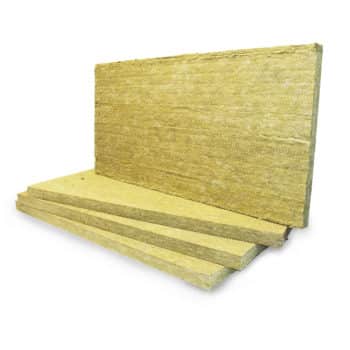
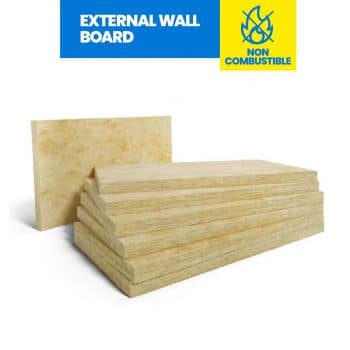
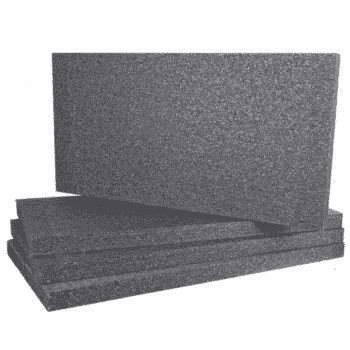

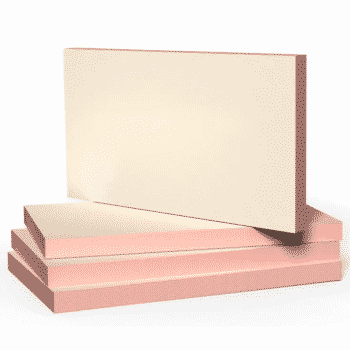
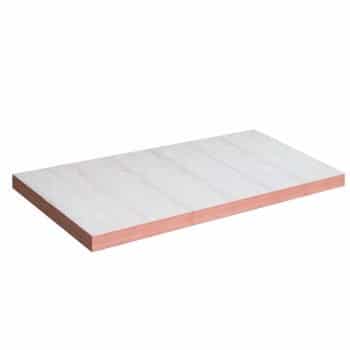
8 thoughts on “Can You DIY External Wall Insulation?”
I had a garden shed and did DIY solid wall insulation. I used foam insulation to stick the boards on to the wooden shed initially, put 50mm K5 on front and back and then 70mm EPS on the sides (The roof didn’t overhang as much on front and back). I then actually put wool insulation in the space between the roof joists and put plasterboard on the inside with 4 spotlights. Much cheaper than buying a garden office and looks really good. I do have a bit of experience plastering, so that definitely helped when trying to get a nice finish on the render.
Hi Richard, great to hear you completed that project yourself, DIYing external wall insulation is certainly possible. Did you use some of our install guides alongside our products?
If anyone were to DIY external wall insulation, I’d highly suggest going on a couple of training courses to get to grips with the different processes and how quickly materials go off. Following a step-by-step guide is simple enough, but you can mess things up if you don’t know the correct techniques.
Hi Ritchie, great point, it’s definitely not a job to undertake lightly! Our friends at EWI Pro run the Training Academy which is accessible to both professionals and DIYers.
What do you use for cutting boards?
Hi Ty, that depends on what insulation board you have. You can use a hot wire cutter for EPS and something as simple as a bread knife for Mineral Wool. We’ve written more about this here.
We live in a 4 bed detached house. Our living room faces South and has 3 external walls, two of which at either end have significant amounts of double glazing. The long wall has no glazing and I was wondering about whether external insulation to that wall alone and limited to the height of the room could be undertaken. It is the only room in the house with significant heat loss.
Hi Edward, we wouldn’t really recommend insulating just one wall because then the other parts of the wall become thermal bridges. You need to achieve the same U-value on every surface.